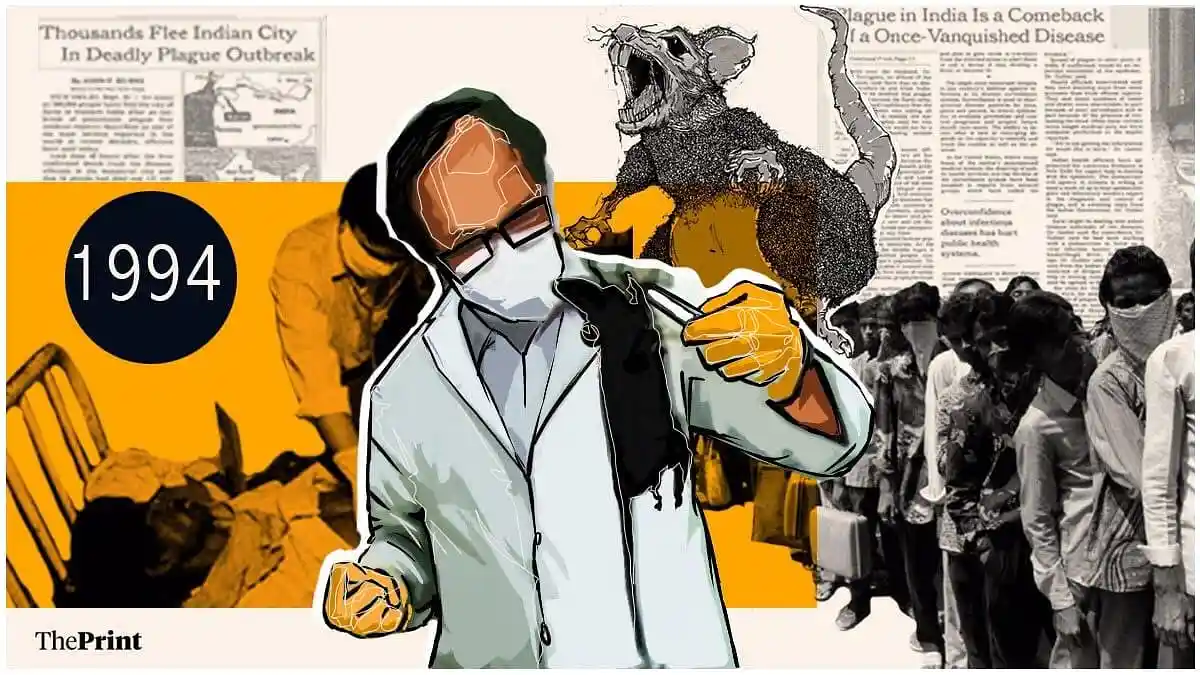Before 2020, there was an outbreak of 1994
“The people fleeing the affected zones are heading in all directions and taking the hysteria with them. With the discovery of three people afflicted with plague in a Bombay hospital, panic has gripped that city as well. Tetracycline, an antibiotic for plague treatment, has disappeared from chemist shops not only in Bombay but also in Delhi”. -The Hindu

Plague outbreak in 1994. Image source: The Print
Would you believe me if I told you that India was hit by a plague in 1994? The millennials would know what I'm saying. But for those of you who don't know, read up.
On 23rd September 1994, the city of Surat went into a panic. A pneumonic plague had broken out, and hospitals were flooded with patients and bodies. Now one must know that there are three types of plague- bubonic (an infection that's transmitted by fleas), pneumonic (when Y. Pestis affects the lungs), and septicemic (when plague bacteria multiply in the blood).
As the plague in Surat was pneumonic, it was easily transmissible through the air, and it was no surprise that within five days, a quarter of Surat's population fled the city.
All logic was abandoned as people tried to flee the city. There was so much fear that each person with a swollen lymph node was thought to be affected. Migrant workers were the first ones to look for a way home. With a mass displacement of people from a city hit by the plague, it was only a matter of time before it spread to other regions.
Due to the outbreak, the international media shed a negative light on India. According to the media, the episodes of migration were no less than a "biblical exodus".
Since India had a long history of medical research, the pneumonic plague was immediately diagnosed, and the WHO confirmed the findings. What remains remarkable is that the Health Ministry of India financed the research on the outbreaks in Surat and Beed was conducted to study the connection between the two (if there was any), and determine what exactly caused the 1994 plague.
The plague spread to Calcutta, Delhi, and Bombay as well. During the initial phase, the cases were confined to Surat. Short-distance contacts were more than long-distance contacts. But then arrived the "expansion diffusion" when the disease intensifies in the existing region and new areas are added.
Strangely, by the time the disease arrived in Bombay, Delhi, and Calcutta, the outbreak had already subsided in Surat. This phenomenon was explained as "reallocation diffusion" where the disease is transferred to other places due to the migration of people.
The swift action taken by the authorities received global recognition. Plague control units were set up all over the country, and a National Surveillance System was instrumental in monitoring the flow of the outbreak.
Despite the sudden outbreak, the pneumonic plague at Surat was curbed effectively before it could become a menace to the entire world. The efforts of healthcare workers and the swift action taken by the government mitigated the damage.


